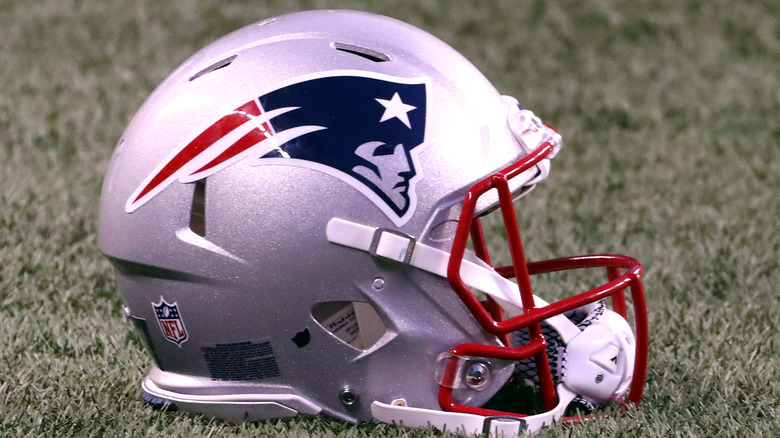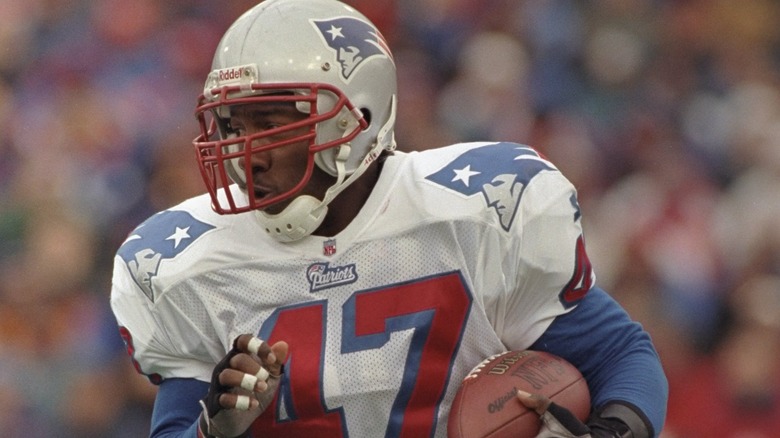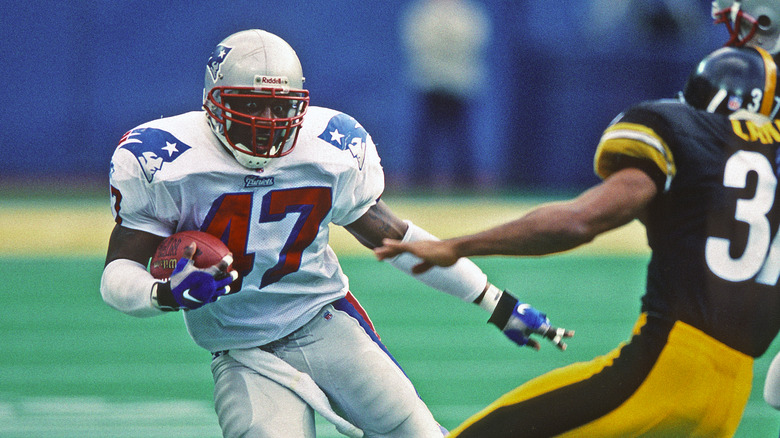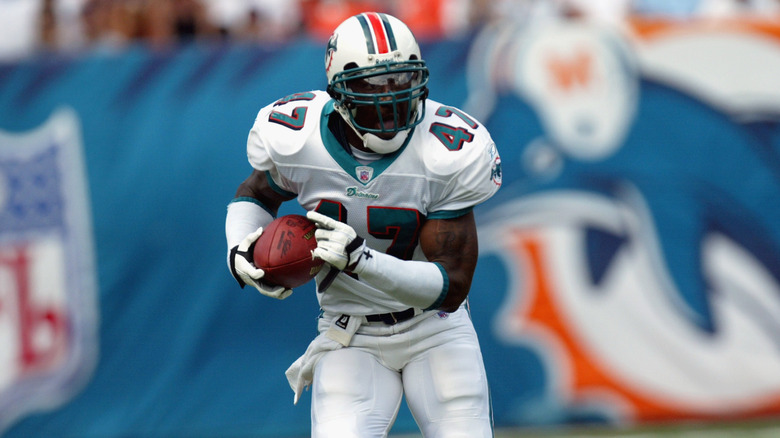The New England Patriots Dynasty Could Have Been More Dominant If Not For A Flag Football Game
Ever since Tom Brady took his talents to the Tampa Bay Buccaneers, the New England Patriots have merely been solid at best (a 10-7 record and a wild-card berth in 2021) and mediocre at worst (7-9 in 2020 with a banged-up Cam Newton behind center). They seem to epitomize the middle-of-the-road NFL team, not bad enough to be in the running for a prized rookie selection in the coming year's draft, but not good enough to make some noise in the postseason. It's still a bit hard to believe that just a few years ago, the Pats won their sixth Super Bowl in the 21st century with a 41-year-old quarterback who could still hold a master class in signal-calling despite his advancing age.
Aside from Brady, there are several other players whose names come to mind when someone mentions the Patriots' NFL dynasty. Of course, you've got his receivers, including, but not limited to tight end Rob Gronkowski and wideouts Julian Edelman, Wes Welker, and Hall of Famer Randy Moss. Head coach Bill Belichick also deserves to be mentioned in those dynasty discussions. But at running back, there haven't been too many notable names outside of Corey Dillon and LeGarrette Blount, who had thousand-yard rushing efforts in seasons where New England won the Super Bowl.
A few years before the Brady/Belichick era, the Patriots had a pretty good running back in Curtis Martin, who left New England for the New York Jets after three seasons and went on to enjoy a Hall of Fame career. However, the team had a ready-made replacement for him, and if it wasn't for a freak injury he suffered while playing an NFL-sanctioned flag football game, the Patriots dynasty could have become even more dominant.
Patriots rookie Robert Edwards had a fantastic freshman season at RB in 1998
Selected 18th overall by the New England Patriots in the 1998 NFL Draft, Robert Edwards wasted no time in emerging as one of the league's most promising young rushers as a rookie. In 16 regular-season games, 15 of which he started, the former University of Georgia star rushed for 1,115 yards and nine touchdowns, adding 331 more yards and three more touchdowns by air. Had he been a part of most other rookie classes, he could have been a shoo-in for Offensive Rookie of the Year honors. However, he was part of a rookie class that also included Indianapolis Colts quarterback Peyton Manning and Minnesota Vikings wide receiver Randy Moss, the latter of whom ended up winning the award with a phenomenal 1,313 receiving yards and 17 touchdown catches.
Despite all that, and despite the fact he didn't get an invite to the actual Pro Bowl either, Edwards seemed destined for big things — he was just a rookie, after all, and barring any untoward incidents, it would have been reasonable to expect even better numbers going forward. But as a consolation prize of sorts, Edwards did get invited to the NFL's Rookie Beach Bowl, a four-on-four flag football game that showcased the 1998 season's top first-year players.
Edwards suffered a devastating knee injury at the Rookie Beach Bowl
All-star games are a showcase of a given league's finest talents, designed to entertain fans first and foremost. And while it's certainly an honor to be selected to play, it's especially heartbreaking whenever someone's career apparently ends during such low-stakes (or no-stakes) games. That, unfortunately, is the fate that befell Robert Edwards during the Rookie Beach Bowl in Hawaii on February 5, 1999.
According to The New York Times, the Patriots running back leaped in the air to defend a pass from Charlie Batch to R.W. McQuarters. Edwards landed awkwardly on the sand, and though he didn't feel any pain at the time, something was clearly wrong as he was unable to get back on his feet. Per Sports Illustrated, the pain then skyrocketed to excruciating levels as he was being wheeled away to Straub Clinic & Hospital in Honolulu, and was, in Edwards' words, "like dislocating your finger, times 50."
When Edwards awoke from surgery, he was informed that he had torn his ACL, MCL, and PCL in his left knee — that's three of the four major ligaments, with the fourth partially torn. The injury had also damaged the artery that carries blood to his lower left leg, and there was a chance he would never walk again. "You'll never play football again, and if you walk again, you will use a cane for the rest of your life," Edwards was supposedly told.
A miraculous comeback
Not only did Robert Edwards suffer an injury that would have almost certainly ended anybody's pro sports career. He also faced the possibility of losing his left leg. ”I remember being carried over to a table and they put me on it, then they rushed me to a Honolulu hospital,” he told The New York Times. ”They told me that if I had gotten there 5 or 10 minutes later, they couldn't have repaired the artery and they would've had to amputate my lower left leg.”
After two years of rehab, Edwards returned to the New England Patriots' training camp in 2001. But the courageous running back missed out on a chance to play alongside a would-be legend in Tom Brady; Bill Belichick, who replaced Pete Carroll as the Pats' head coach the year prior, cut Edwards after just one month.
One year later, Edwards got to make his NFL return, and what a comeback it was. Sure, he may have only rushed for 107 yards in 12 games as the Miami Dolphins' third-down running back, and he was out of the league the very next season. But he had returned from an injury that nearly took away his ability to walk, and for that, he received the Associated Press Comeback Player of the Year Award for the 2002 campaign. And to top it all off, he even had a couple of 1,000-yard rushing seasons in the Canadian Football League in the mid-2000s.
Impressive as his comeback was, you really have to wonder just how strong the Patriots could have been had Edwards stayed healthy, developed into a Pro Bowl-caliber running back, and enjoyed his prime years with Brady emerging as the man behind center in New England.



